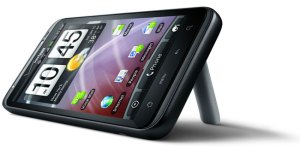
Market analysis firm Canalys has published its worldwide figures for smartphone market share, finding that Google’s Android platform leads the world for the second quarter in a row—and extended its smartphone share to 35 percent. Overall, Canalys finds Nokia, Apple, RIM, Samsung, and HTC were the top five smartphone vendors during the first quarter of 2011, but while Apple continues to expand its market share, RIM saw its share drop as the company worked on launching a product line refresh.
Canalys attributes Android’s global dominance of the smartphone market to strong performances from several vendors, including HTC, Samsung, LG, Motorola, and Sony Ericsson, with each vendor shipping more than 3 million devices. LG Electronics took over Motorola’s sixth-place standing worldwide owing to strong sales of its Optimus smartphones.
The United States remained the largest market for smartphones, with Apple seeing a 150 percent increase in its market share year-on-year and capturing 31 percent of the market. However, Canalys crowns Android as the dominant platform in the United States with a 49 percent share, and HTC as the leading Android device vendor in the U.S. market at the number-two smartphone vendor overall.
“Shipments of [HTC’s] EVO series, Inspire 4G, and Thunderbolt enhanced HTC’s strong performance in this quarter,” said Canalys VP and principal analyst Chris Jones, in a statement. “The vendor has a wide and regularly refreshed portfolio, covering multiple network technologies, which puts it in a strong position both in the U.S. and worldwide.”
In another interesting note, Samsung shipped some 3.5 million smartphones running its own Bada platform during the first quarter of 2011; that’s over a million more Bada-based phones sold during the quarter than Windows Phone devices from all vendors. Canalys noted Samsung’s success with Bada indicates the smartphone market can accommodate multiple operating systems, and vendors can benefit from keeping tight control over device development “to hit the right markets and price points.”
Canalys also noted that, while Nokia is struggling to shift its smartphone strategy, the company’s sheer size and momentum still make it a formidable player. “[Nokia’s] worldwide reach, however, should never be underestimated,” said Canalys principal analyst Pete Cunningham. “Canalys’ country-level data shows that the vendor remains number one in 28 countries, including mainland China.”


